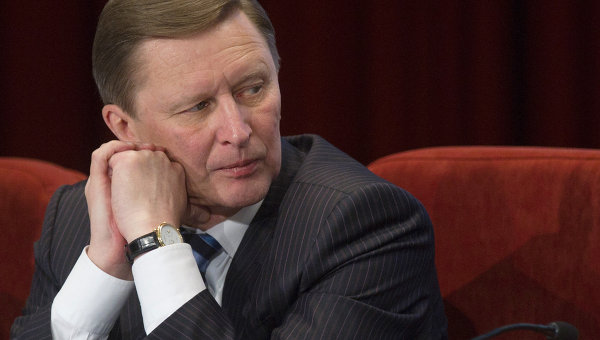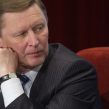
Russia’s ‘Carrot and Stick’ Policy on the Ukraine Crisis
Publication: Eurasia Daily Monitor Volume: 12 Issue: 117
By:

Official statements, interviews and comments from some members of the Russian government and military top brass on the Ukraine crisis denote the use of the “carrot and stick” in the Kremlin’s policy. Moscow claims, for example, that the Minsk II agreement represents the best way forward, while the continual breaches of the February ceasefire, tactical skirmishes and testing of Ukrainian defenses combined with the Russian “snap exercises” and rumors of a possible “large-scale” invasion show another side to this approach. In all these maneuvers, President Vladimir Putin maintains escalation dominance, outplays his Western opponents, and seems to be gaining increasing traction for Russian policy within Europe, albeit varied in the level of success, ranging from seeking deals with economically challenged Greece to his high-profile reception at the Vatican.
Putin has been busy on the international diplomatic front, while finding time to “rattle” a nuclear saber, causing a ripple effect within the North Atlantic Treaty Organization (NATO) with the announced renewal of 40 intercontinental ballistic missiles (ICBM) in a show of “nuclear muscle” flexing. However, a much softer line has emerged from one of his chief lieutenants—the head of the presidential administration, Sergei Ivanov (Rossiya 1 TV, June 20).
Ivanov, as a former defense minister and sharing Putin’s Federal Security Service (FSB) background in St. Petersburg, provided some less antagonistic comments during an interview broadcast as part of the Vesti v Subbotu current affairs program. In addition to dismissing the idea of Putin staging an early presidential election to re-establish his mandate prior to conducting deep economic reforms, Ivanov praised Minsk II. According to Ivanov, the Minsk II agreement offered an “ideal way to resolve the internal Ukrainian conflict.” He added, “Russia has been persistently urged to exert its influence on the militia, but I believe that we have exerted very serious influence because militia fighters have made a fundamental move: they have changed their position. At first they had voted for independence and now they say: ‘we are prepared to remain part of Ukraine if the Minsk agreements are implemented.’ ” Ivanov further asserted, “But Kyiv has done nothing, so it is not we who should exert pressure on the militia, but pressure should be exerted on those who, to put it diplomatically, have strong influence on the Kyiv authorities.” Although most of Ivanov’s comments featured familiar arguments, he noted a new willingness on the part of Washington to resolve the crisis “by political means” (Rossiya 1 TV, June 20). Ivanov’s defense of Russian policy in Ukraine was certainly robust, but appeared to contain a new element: holding out the idea of reaching a solution that transcends the Normandy format.
Ivanov stated that Moscow has considered ways to widen the membership of the Normandy Group, but decided against this. Instead, Ivanov explained that Russia has opened a bilateral mechanism with the United States that involves direct contact between US Assistant Secretary of State Victoria Nuland and her Russian counterpart, Grigoriy Karasin. Ivanov explained, “Obviously, it [the US] has come to the idea to really try to resolve the Ukrainian domestic crisis by political means. There has been an agreement to establish a separate bilateral format—the Russian-American channel Karasin-Nuland” (Interfax, June 20).
This channel has been formed in order to try to coordinate actions to resolve the situation in Ukraine, and in Ivanov’s view, the bilateral approach is necessary: “Why bilateral? In principle, we could have expanded the Normandy format by another party, by including the USA. But the Normandy format is so fragile right now that this step would be risky. So to avoid destroying everything, we agreed that we would coordinate our activities with regard to Ukraine on a bilateral basis.” Indeed, Ivanov linked the opening of this “channel” to the visit made to Sochi by Secretary of State John Kerry and a realization in Washington that the situation in Ukraine is spiraling “out of control,” which he placed in the context of US meddling elsewhere, including Libya and Syria (Interfax, June 20).
Ivanov’s comment, which alludes to Moscow’s fear of “color revolution,” underscores the lack of trust between the US and Russia; with the latter seeing this as a high risk in Russia’s security. That was confirmed by Defense Minister Sergei Shoigu, announcing that the defense ministry intends to launch detailed and thorough research of the “color revolution” phenomenon, in order to avoid the country’s experience of Soviet collapse and internal crisis in 1991 and 1993. Shoigu’s comments are important not least to confirm the defense ministry sees a role for its forces in protecting the Russian regime and ensuring internal security. During the Armiya 2015 exhibition in Alabino, Moscow Region, Shoigu told a roundtable session titled “Army and Society”: “We do not have the right to repeat the situation of the collapse of 1991 and 1993. That was a different history, but it is obvious that we need to deal with a situation like this. We should understand how to stop this and how to bring up our young people, so they head on the right path for the onward, peaceful, progressive movement of our country.” Shoigu remarked that various forms of “color revolution” must be studied, including the Arab Spring, Serbia and the “one in front of our eyes”—a clear reference to the events in Kyiv in the winter of 2013–2014 (Interfax, June 19).
Moreover, Shoigu’s observations on the need to study color revolution are combined with a familiar and ongoing motif in Russia’s military and defense posture: using “snap inspection” military exercises to send strategic messages and also intimidate Kyiv. The latest air force– and air defense–centered exercises in the Central Military District stressed elements such as strategic mobility and rehearsing elite troop insertion, and these drills witnessed artillery units operating alongside mobile reconnaissance posts (Rossiyskaya Gazeta, June 18; Interfax, June 17). Moscow’s underlying message is that further escalation of its operations in Ukraine is still in the cards, but the US-Russia diplomatic channel is open in order to avoid using this option. Thus, the use of the carrot and the stick preserves Moscow’s options, sows doubt among NATO allies, raises questions about the purpose of the West sending lethal aid to Ukraine, and helps Putin to retain the initiative. However, perhaps more than in recent months, Moscow seems to be holding open a diplomatic door, and thus the shell of Minsk II looks somehow to present at least an illusion of hope.




